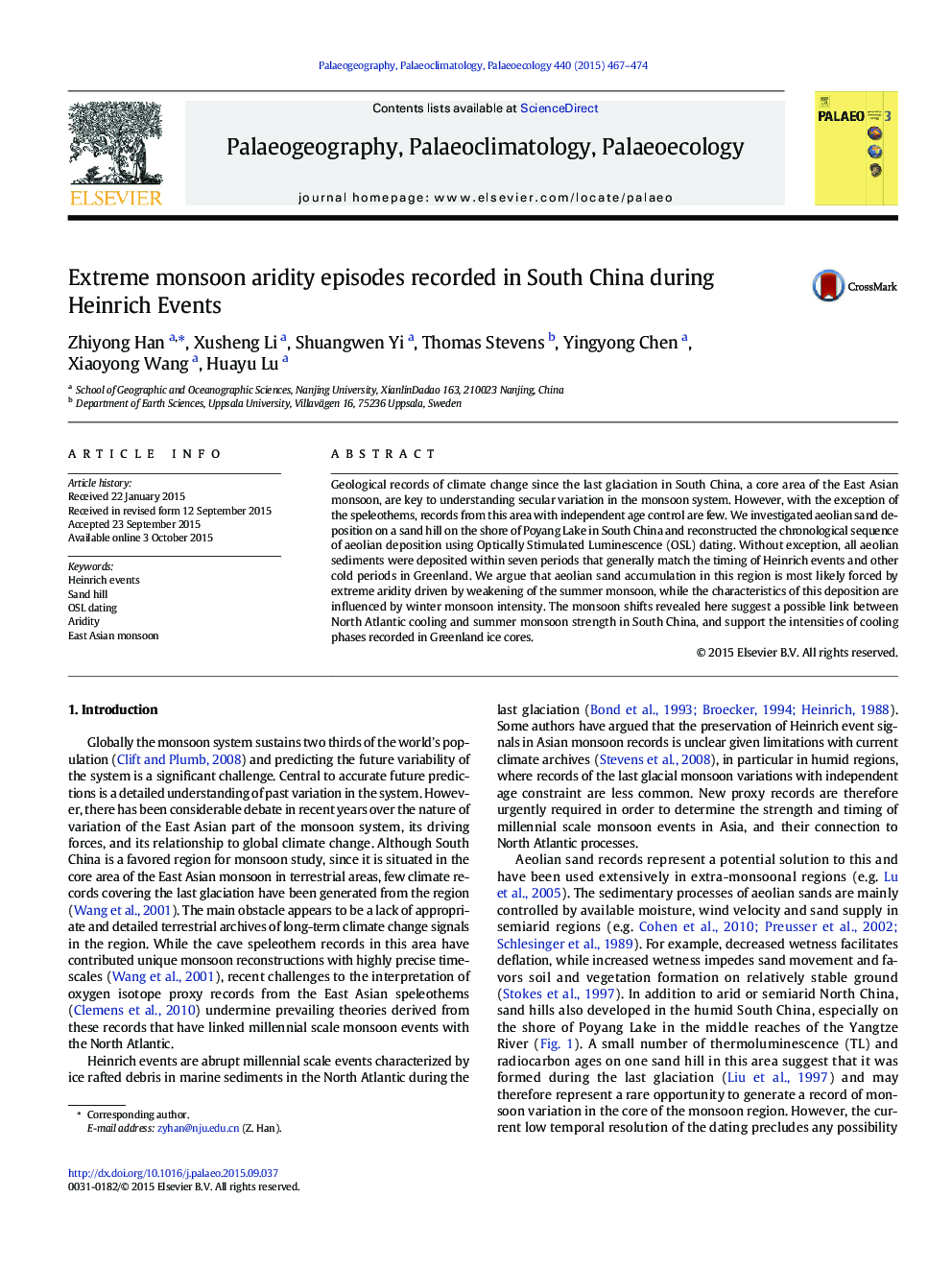| Article ID | Journal | Published Year | Pages | File Type |
|---|---|---|---|---|
| 6349545 | Palaeogeography, Palaeoclimatology, Palaeoecology | 2015 | 8 Pages |
•River-bordering sand hills developed during the last glaciation in South China.•Timing of aeolian sand accumulation at Shaling is determined by OSL dating.•Aridity is the main factor controlling the aeolian sand accumulation.•Aeolian sand accumulated during seven extreme monsoon aridity episodes.•Extreme monsoon aridity episodes can be correlated to Heinrich events.
Geological records of climate change since the last glaciation in South China, a core area of the East Asian monsoon, are key to understanding secular variation in the monsoon system. However, with the exception of the speleothems, records from this area with independent age control are few. We investigated aeolian sand deposition on a sand hill on the shore of Poyang Lake in South China and reconstructed the chronological sequence of aeolian deposition using Optically Stimulated Luminescence (OSL) dating. Without exception, all aeolian sediments were deposited within seven periods that generally match the timing of Heinrich events and other cold periods in Greenland. We argue that aeolian sand accumulation in this region is most likely forced by extreme aridity driven by weakening of the summer monsoon, while the characteristics of this deposition are influenced by winter monsoon intensity. The monsoon shifts revealed here suggest a possible link between North Atlantic cooling and summer monsoon strength in South China, and support the intensities of cooling phases recorded in Greenland ice cores.
